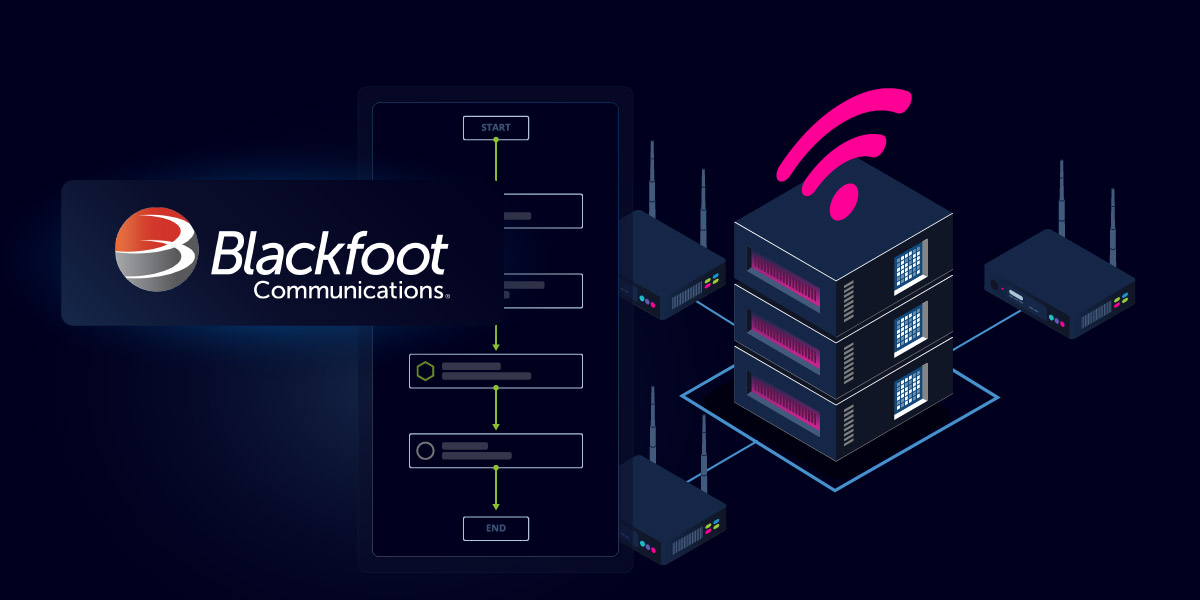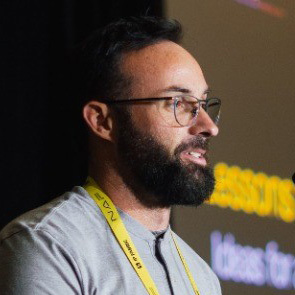Share this

Table of Contents
For regional providers like Blackfoot Communications, the challenge of modernizing operations wasn’t theoretical — it was immediate and business-critical. A growing customer base, expanding fiber infrastructure, and increasing demand for new services were colliding with a provisioning process that couldn’t keep up. Manual work, aging systems, and fragile handoffs between tools were slowing delivery, increasing risk, and putting pressure on every part of the team.
Launching something as straightforward as a new caller ID feature meant weeks of effort. Engineers were reverse-engineering APIs, manually crafting XML payloads, and stitching together scripts to push changes across systems. Every step required deep system knowledge and time-intensive coordination, and the consequences added up quickly: delayed billing, slower time to value, and missed opportunities to improve customer experience.
Blackfoot didn’t need more people. They needed a better way to operate.
That’s when they turned to Itential.
From Manual to Modern, Without a Full Rebrand
Before Itential, Blackfoot’s provisioning process was slow and error-prone. Engineers had to manually pull data from inventory tools, translate it into templates, run command-line scripts, and document everything after the fact. Each step required tribal knowledge and constant handoffs.
With Itential, Blackfoot introduced a new approach: low-code, scalable automation that works across systems. Instead of rebuilding their entire tech stack, they used Itential to connect what they already had — ticketing systems, inventory tools, controllers, and even legacy devices — into a single, orchestrated workflow.
One of the most immediate benefits came from Itential’s dynamic federation capability, which gave Blackfoot a unified view of their network inventory across all systems and tools. This eliminated the guesswork and manual lookups that previously slowed down provisioning and troubleshooting.
The results were immediate.
Automation That’s Built for the Way Teams Work
Itential enabled Blackfoot to automate processes across legacy infrastructure, inventory tools, and command-line interfaces — without needing to write custom code. Engineers could now design and deploy reusable workflows, while operations teams could run approved tasks safely through self-service portals.
Another key unlock was the ability to transform data between tools using Itential’s visual JSON designer. Rather than hand-coding every integration or writing brittle translation logic, teams could easily map and format data in minutes — reducing errors and speeding up time to value.
![]()
Part and parcel of what I love about the solution is, it’s been really hard to find solutions that translate data from XML into objects that actually do real work.
David Maedche, Software Network Engineer
The New Operational Backbone
Itential gave Blackfoot the ability to:
🔍 Federate and normalize network data from platforms like Metaswitch, Calix, Adtran, and Fortinet — creating a clean, real-time view of inventory and services across their infrastructure.
🚀 Automate end-to-end workflows for provisioning and configuration changes across multi-vendor environments, including Cisco, Juniper and Fortinet.
🔄 Rapidly build and manage data transformations using drag-and-drop JSON tools — eliminating the need for custom code when integrating between systems like Metaswitch and legacy infrastructure.
This meant engineers spent less time troubleshooting and translating data— and more time improving the network and accelerating customer delivery.
What Changed? Everything That Matters.
Blackfoot’s transformation wasn’t just about modernizing processes — it was about unlocking real, measurable outcomes:
- Provisioning times dropped from weeks to minutes. Teams can now activate services in near real time.
- Operational efficiency soared. Manual tasks were eliminated, and workflows were standardized across teams.
- Service quality improved. Fewer misconfigurations, faster response times, and greater consistency raised the bar for customer experience.
- Time to value for new tools shrank. Adding new systems, vendors, or services now takes hours — not months.
Most importantly, the team didn’t have to become software developers to get there. With Itential, they could build and deploy automations using visual tools and intuitive interfaces — empowering engineers to own the process without writing custom scripts.
A Playbook for Regional Providers
Blackfoot’s journey reflects what many regional and mid-size service providers face: complex networks, limited resources, and rising pressure to deliver. Their success with Itential proves that you don’t need a massive engineering team or a full technology overhaul to modernize your operations.
You just need the right platform to unify your tools, simplify your workflows, and scale your impact.
Whether you’re delivering internet to rural homes or managing enterprise networks, the path to better operations doesn’t start with hiring 10 more engineers — it starts with giving the team you already have better tools.



